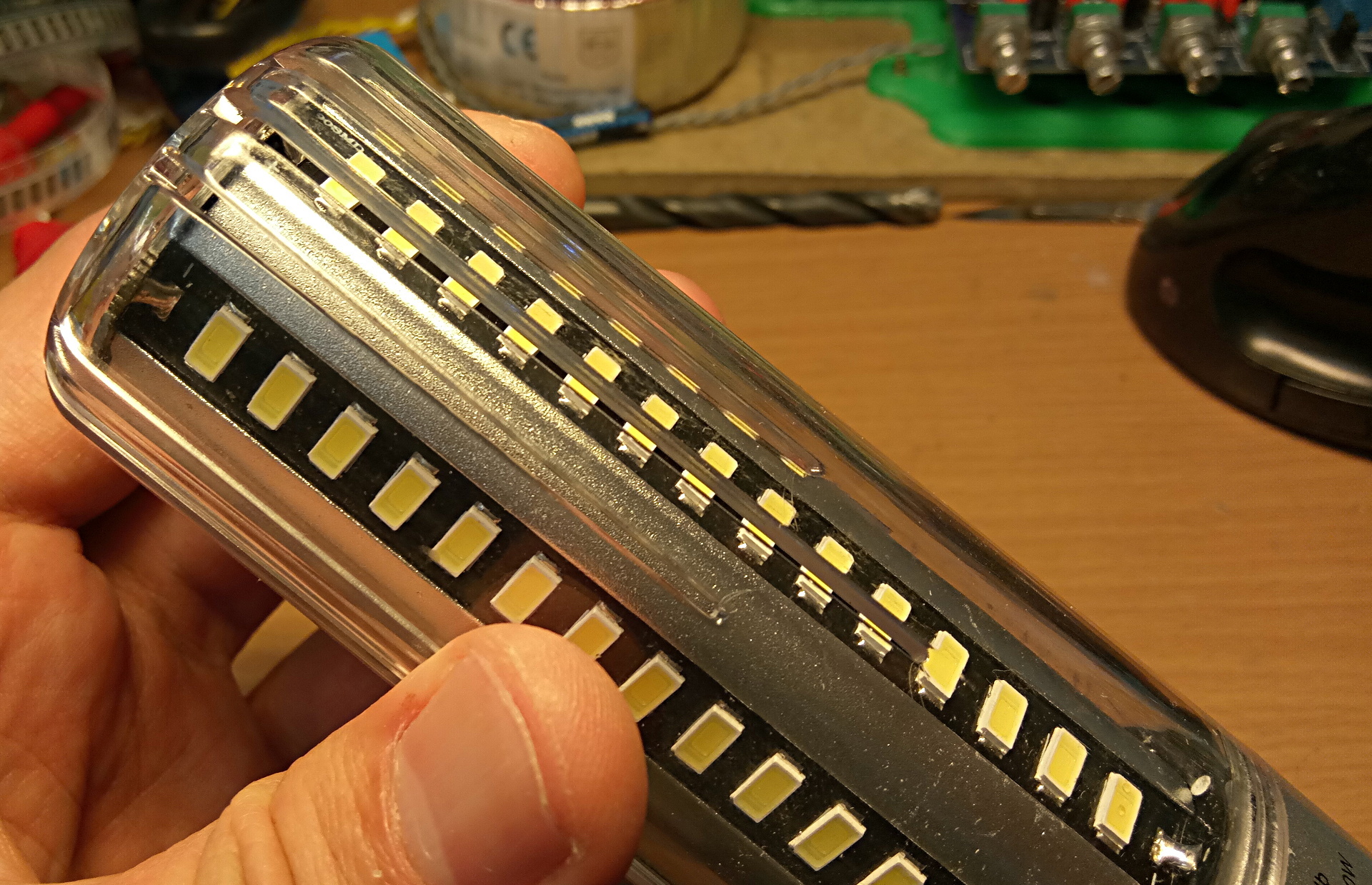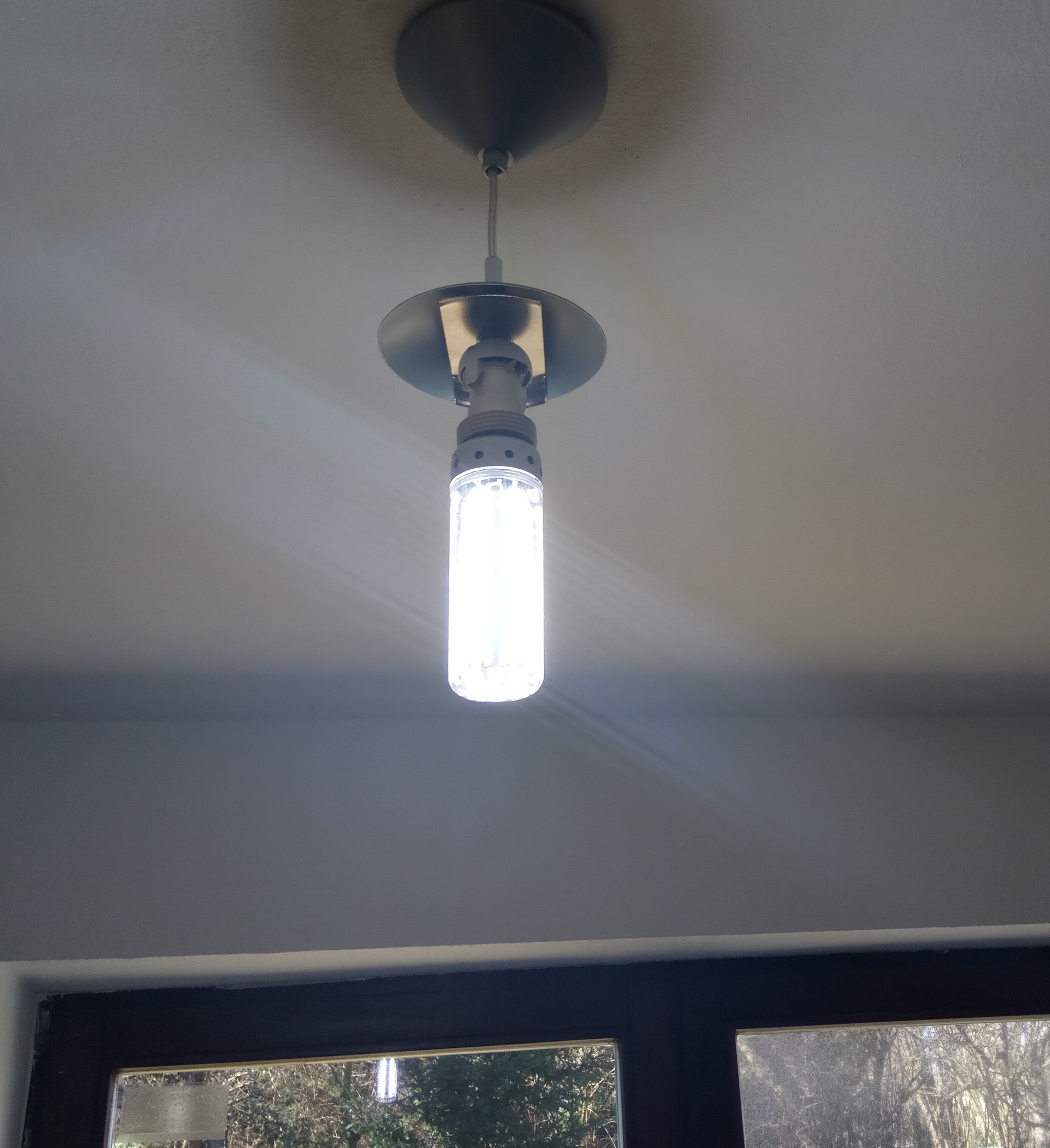Find out who is the smartest, or cool my lamp

* Written in the wake of this publication.
** I do not recommend repeating, it can be dangerous!
Good day to you, dear geeks and sympathizers!
')
After Comrade Elpi, in his publication, very flatteringly commented on the products of the widely known Atcom firm in narrow circles, I decided. At the cost of incredible efforts, having escaped from the power estrangulamento Ezequiel of my personal amphibian, I ordered four lamps for aliexpress at once: two for 18 each and two for 20 Watts each.
To begin with, I would like to make a small reservation: the aforementioned comrade advised me not to buy lamps with a capacity of more than 10 watts, indicating their tendency towards rapid overheating and a possible significant discrepancy to the stated parameters.
Just by the way, recalling the well-known saying about fools, studying solely on their own mistakes, I decided to do what I always do in such cases, and I ordered four powerful lamps worth $ 28.
They came to me fairly quickly, in some incomplete five weeks. The lamps were packed in the best plastic blisters, but they managed to get to my door full and beautiful.
This is how the lamp looked like before my crazy hands applied to it:

The first and most important thing: the base is not glued to the plastic bulb of the lamp, but snap into it through the belt and the notch. I have not decided how to treat this: positive in terms of driver repair or negative in terms of security. The lamp opens extremely easily, revealing to the world its neatly arranged inside:

As you can see, the driver is wrapped in a yellow plastic self-adhesive. It is time to inquire, angrily shaking with hanging flakes: “How long! Until the talentless artisans will be wrapped with insulating materials nodes to be cooled? How long ?! ”
After such a shock, which required to relieve my bitterness of serious libations with beer, I noticed semicircular slits in the upper end of the cap. If I did not treat with equal respect to all people, regardless of their gender, race and religion (marketers and politicians do not count), I would have thought that some idiot decided to arrange the cooling of the lamp driver in this way.
Consider a plastic flask more closely:


It is easy to see that the flask has teardrop-shaped openings in the end and slit-like slots in the lower part. However, some of the slots reach half the length of the flask, while others reach about 2/3 of the length. In the upper part there are no holes at all. Repeat the shaking with lanites and beer reception.
Now it is time to disturb the soulless, but honest and impartial lady with the wonderful name Physics. According to its postulates, the heated air loses in specific density, it becomes lighter and rises, taking with it a part of the thermal energy of the body that heated it. If at the same time the heated air is not obstructed on its way to success, but also to provide the supply of unheated air from below, a constant current of air along the heater body and its (body) cooling will be provided. This principle is based on passive convection cooling. Or heating.
The most common scenario for using a lamp is when the lamp hangs down. Accordingly, the air that has come in through the slits of the lower half of the flask and heated by the LEDs rushes into the upper half of the flask in a powerful stream, where it remains to overwinter, warming up the base and the driver. In the basement, which is quite airtight at the junction with the bulb, the process is also not particularly efficient: the heated air rushes into the micro-cracks of the upper part of the cap, and tries to leave this vale of a solitary plastic wrapped driver. But, since there is no place for unheated air, after the release of a certain amount of hot air, convection stops. The whole structure is heated, the electrolytic capacitors boil, the LEDs are degrading.
How to live on, is it worth it and is there 42? He is there! Go through the points.
1. Release the driver from the plastic winding:

2. We drill five-millimeter holes in the upper part of the flask, in the walls of the base and in the middle of the slits of the base. Holes are shown with sloppy red arrows:

3. Cut out from plastic packaging some dear spirits of your beloved wife, such an insulating disk:

The disc is needed so that the driver’s contacts, which are bare after removing the plastic, do not arrange a firework with the participation of the flask’s bare contacts.
4. Place the disk between the bulb and base, collect the lamp:
5. Try to turn it on. If not bahnul and shines, then this success:


Now about safety: Of course, the presence of a large number of additional holes does not add strength to the body, and the theoretical possibility of direct contact with current-carrying conductors through these holes cannot be completely ruled out either. Apparently, therefore, all the vents and made by the manufacturer in the form of slots. In short, who does not know how and what, let them not go where they don’t need :)
Now, about the
As for the light flux: the lamp is very bright, I did not notice a decrease in the light intensity during long-term operation. Pulsations are also invisible (well, or they are not). I have a lamp that works inside a large closed glass sphere in which an incandescent lamp of up to 100 watts is allowed.
Published under the WTFPL license.
Have fun!
Source: https://habr.com/ru/post/402087/
All Articles